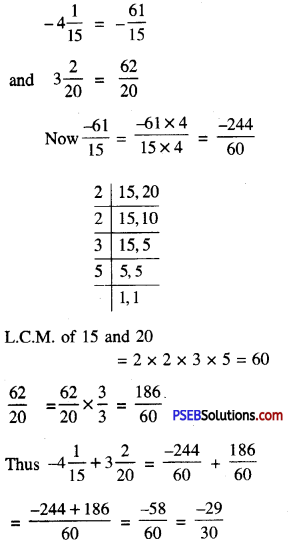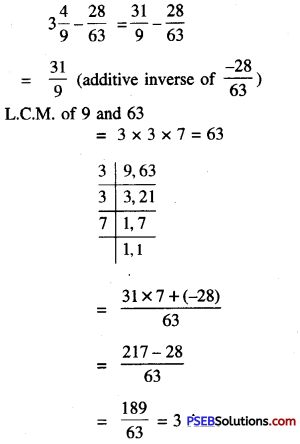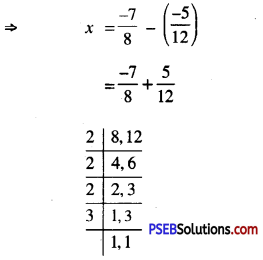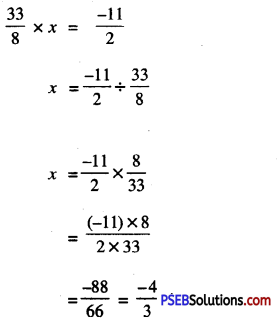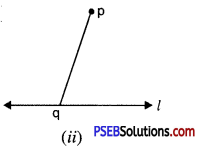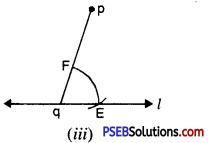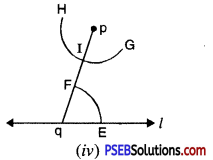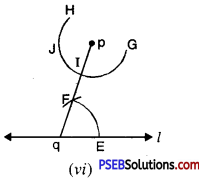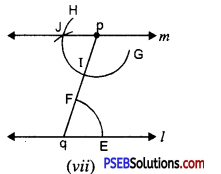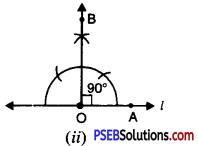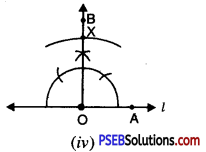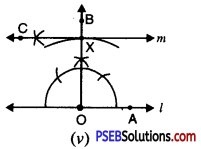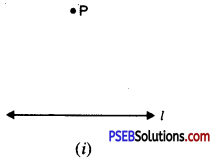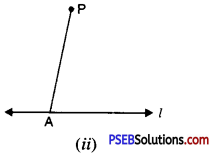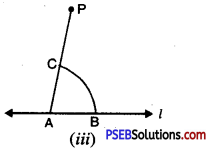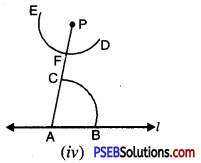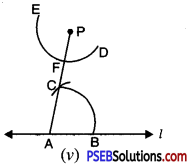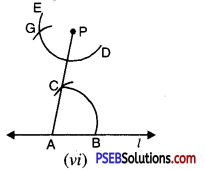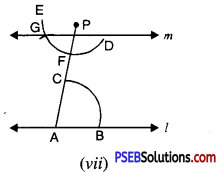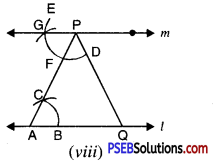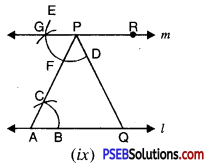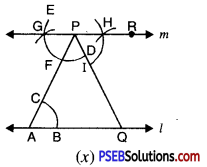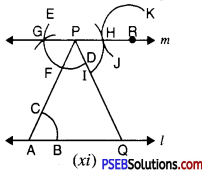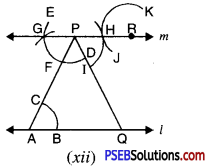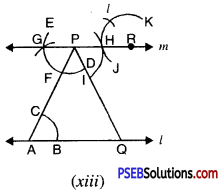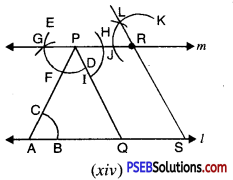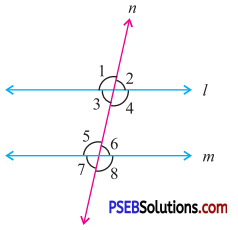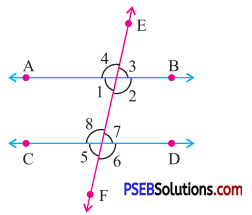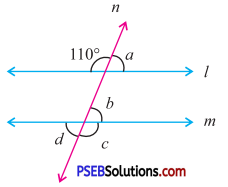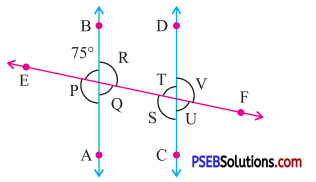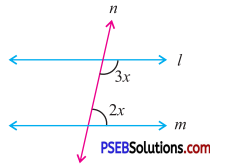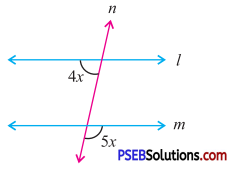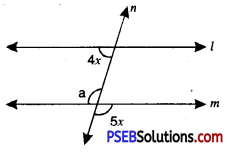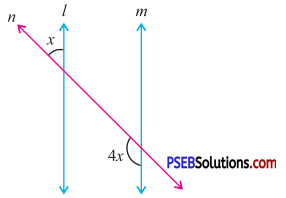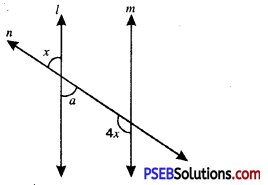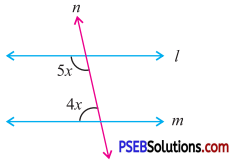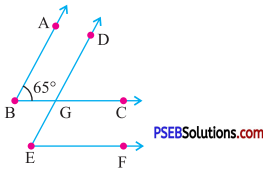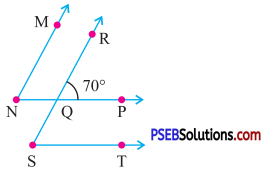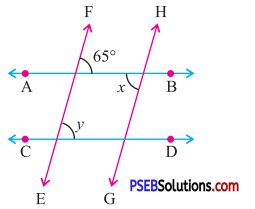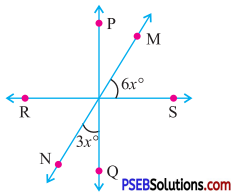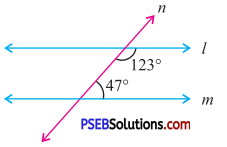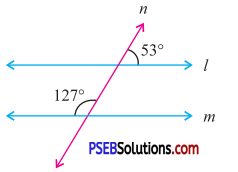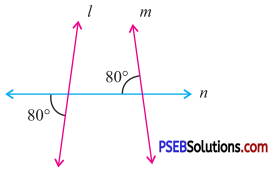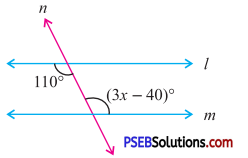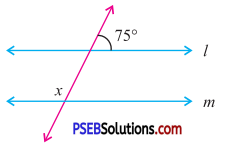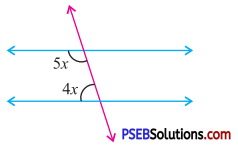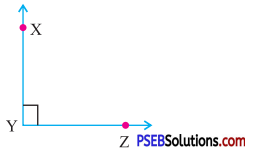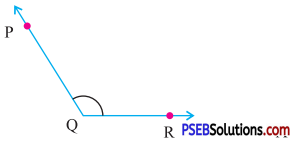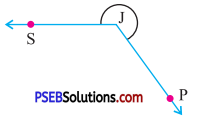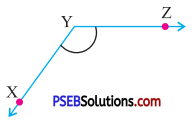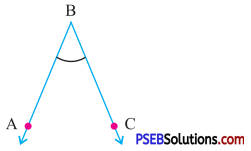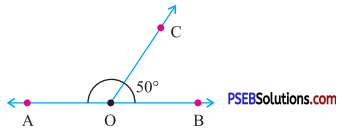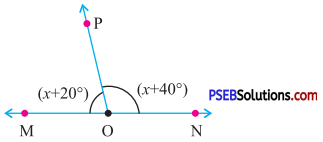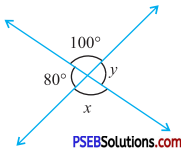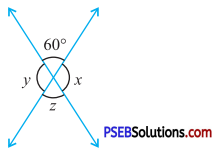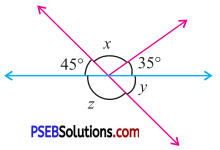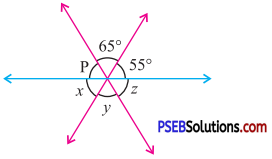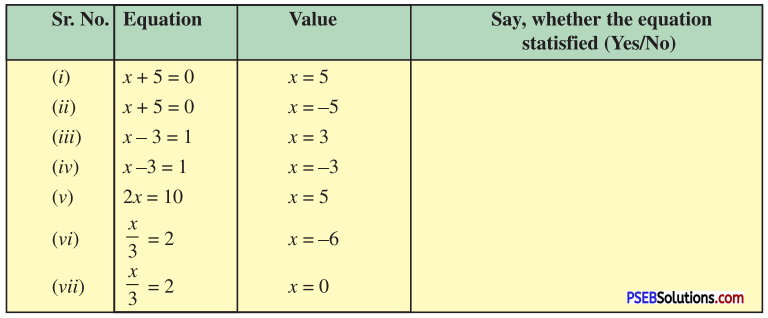Punjab State Board PSEB 7th Class Maths Book Solutions Chapter 6 Triangles Ex 6.1 Textbook Exercise Questions and Answers.
PSEB Solutions for Class 7 Maths Chapter 6 Triangles Ex 6.1
1. In ΔABC, P is midpoint of BC, then
(i) BP = ……………..
(ii) AP is a …………….. of ΔABC
(iii) ∠ADC = ……………..
(iv) BD = BC (True/False)
(v) AD is an …………….. of ΔABC
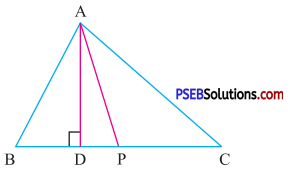
Solution:
(i) PC
(ii) Median
(iii) 90°
(iv) False
(v) Altitude
2. (a) Draw AD, BE, CF three medians in a ΔABC.
(b) Draw an equilateral triangle and its medians. Also compare the lengths of the medians.
(c) Draw an isosceles triangle ABC in which AB = BC. Also draw its altitudes.
Solutions:
(a) We are given ΔABC D, E and F are mid points of the sides BC, CA and AB respectively. Join AD, BE and CF.
The AD, BE and CF are the required medians.
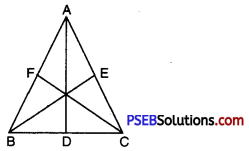
(b) Draw an equilateral triangle ABC, D,E and F are the mid points of sides BC, CA and AB respectively. On joining AD, BE and CF, we get the required medians AD, BE and CF. Measure the lengths of AD, BE and CF we observe that the three medians AD, BE and CF are equal in length.
∴ AD = BE = CF.
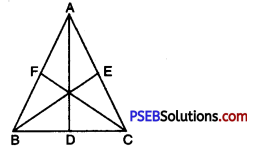
(c) Draw an isosceles ΔABC in which AB = BC Altitude can be drawn as below :
AD is the altitude from A to D.
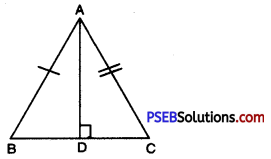
![]()
3. Find the value of the unknown exterior angles.
Question (i).

Answer:
In the given triangle,
By exterior angle property of a triangle
Exterior angle = sum of interior opposed angles
x = 100° + 40°
∴ x = 140°
Question (ii).

Answer:
By exterior angle property of a triangle
Exterior angle = Sum of interior opp. angles
x = 20° + 30°
∴ x = 50°
Question (iii).
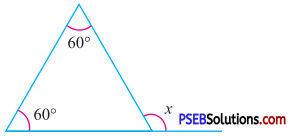
Answer:
By exterior angle property of a triangle
Exterior angle = Sum of interior opp. angles
x = 60° + 60°
∴ x = 120°
Question (iv).
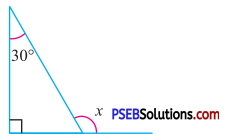
Answer:
By exterior angle property of a triangle
Exterior angle = Sum of interior opp. angles
x = 90° + 30°
∴ x = 120°
![]()
4. Find the value of x in the following figures.
Question (i).
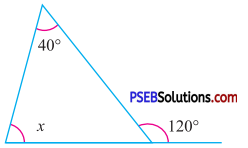
Answer:
By exterior angle property of a triangle
Sum of interior opp. angles = Exterior angle
40° + x = 120°
x = 120° – 40°
x = 80°.
Question (ii).
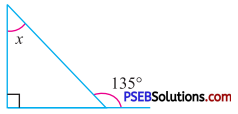
Answer:
By exterior angle property of a triangle
Sum of interior opp. angles = Exterior angle
x + 90° = 135°
x = 135° – 90°
x = 45°
Question (iii).
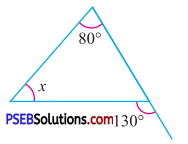
Answer:
By exterior angle property of a triangle
Sum of interior opp. angles = Exterior angle
x + 80° = 130°
x = 130° – 80°
x = 50°
Question (iv).
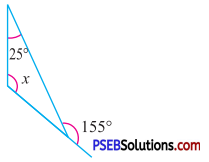
Answer:
By exterior angle property of a triangle
Sum of interior opp. angles = Exterior angle
x + 25° = 155°
x = 155° – 25°
x = 130°
![]()
5. Find the value of y in following figures.
Question (i).
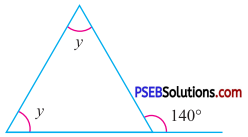
Answer:
By exterior angle property of a triangle
Sum of interior opp. angles = Exterior angle
y + y = 140°
2y = 140°
y = \(\frac{140^{\circ}}{2}\)
y = 70°
Question (ii).

Answer:
By exterior angle property of a triangle
Sum of interior opp. angles = Exterior angle
y + 90° = 160°
y = 160° – 90°
y = 70°
Question (iii).

Answer:
By exterior angle property of a triangle
exterior angle = Sum of interior opp. angles
5y = y + 80°
5y – y = 80°
4y = 80°
y = \(\frac{80^{\circ}}{4}\)
y = 20°.

